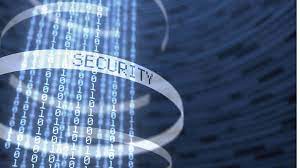In an era teeming with rapid technological advancements, the prospect of quantum computing stands as both an enigma and a frontier of immense potential. At the crux of this complex discourse lies a deceptively simple question: will quantum computing break SHA-256 encryption? To engage with this query necessitates not only a comprehension of cryptographic principles but also an appreciation for the transformative capabilities emerging from quantum mechanics. As we traverse this labyrinth of ideas, we shall explore the nuances of SHA-256, delve into the intricacies of quantum computing, and ultimately confront the implications of this technological convergence.
SHA-256, or Secure Hash Algorithm 256-bit, represents a cornerstone of modern encryption protocols. Developed by the National Security Agency (NSA) and published in the Federal Information Processing Standards (FIPS), SHA-256 is widely used for securely hashing data, thereby preserving the integrity of information. It generates a fixed-size output (256 bits) from any arbitrary input, making it exceedingly difficult to reverse-engineer the original data from the hash. This characteristic is pivotal in various applications ranging from secure online transactions to blockchain technology.
Nevertheless, the efficacy of SHA-256 hinges on computational limitations. Traditional computers, employing classical bits as their fundamental unit of information, perform calculations using deterministic algorithms that, under current technological constraints, render brute-force attacks—wherein an adversary systematically attempts every possible key—prohibitively time-consuming and resource-intensive. However, the emergence of quantum computing threatens to upend these established norms.
Quantum computers harness the principles of quantum mechanics, deploying qubits instead of classical bits. A qubit can exist in multiple states simultaneously, a phenomenon known as superposition. This intrinsic property allows quantum computers to process a vast expanse of possibilities concurrently. When one considers the implications for cryptography, the potential exists for quantum algorithms to exponentially expedite tasks that would otherwise take classical computers eons to complete.
The most notable quantum algorithm poised to challenge cryptographic norms is Shor’s algorithm. Developed by mathematician Peter Shor in 1994, this algorithm efficiently factors large integers. Such a capability would directly impact widely used public-key cryptosystems, like RSA and ECC, which underpin much of today’s digital security. Yet, a pivotal nuance arises here: SHA-256 is a hash function, not a public-key encryption scheme. The implications of quantum computing behave differently when considered through this lens.
While Shor’s algorithm presents a formidable threat to public-key systems, the challenge posed to SHA-256 is less direct but equally disconcerting. Grover’s algorithm, another quantum breakthrough, offers a quadratic speedup for unstructured search problems and, by extension, can be adapted to accelerate brute-force attacks on cryptographic hash functions. In layman’s terms, Grover’s algorithm allows a quantum computer to find a pre-image in a hash function with a complexity of approximately (2^{(n/2)}), where (n) represents the bit-length of the hash. For SHA-256, this translates to an effective reduction of the security level from 256 bits to roughly 128 bits by quantum means.
This may lead some to wonder: does a reduction to 128 bits suffice for contemporary digital security? As it stands, 128 bits are considered substantially secure against conventional attacks. Nevertheless, the rapid evolution of both computing power and quantum capabilities suggests that this comfort may be fleeting. The unpredictable trajectory of quantum technology compels us to contemplate the longevity of current encryption standards.
Moreover, the potential emergence of quantum supremacy—the point at which a quantum computer can perform tasks beyond the reach of classical counterparts—reinforces this urgency. While scientists have made significant strides toward achieving this benchmark, the societal ramifications warrant thoughtful deliberation. As industries ranging from finance to healthcare increasingly rely on secure communication channels, any disruption resulting from quantum advancements necessitates a proactive approach to safeguard sensitive data.
What strategies can be employed to mitigate the potential impacts of quantum computing on SHA-256 encryption? A principal response lies in the development and adoption of post-quantum cryptography. This field seeks to establish cryptographic algorithms that remain secure against the computational potency of quantum attacks. Researchers are currently scrutinizing various mathematical structures, such as lattice-based cryptography, to formulate alternatives that could withstand quantum encroachments.
Additionally, transitioning to hashing schemes with higher bit-lengths and more complex algorithms may also enhance defenses against quantum threats. However, such measures must be judiciously evaluated to ensure compatibility with existing systems while maintaining performance efficacy.
Ultimately, the question of whether quantum computing will break SHA-256 encryption is vested in a broader dialogue about the future of digital security. As quantum technology continues to evolve, it challenges the conventions of cryptography and beckons a reexamination of our security tactics. The interplay between calculation and encryption will necessitate foresight, adaptability, and a willingness to embrace innovative solutions.
In summation, the fusion of quantum computing and cryptography posits an intriguing conundrum. While SHA-256 encryption may not be immediately compromised, the potential exists for quantum advancements to erode its effectiveness over time. As stakeholders in the realms of technology and security, we must remain vigilant, investing in research and development to fortify our digital infrastructures against the looming quantum horizon. The resilience of our cryptographic mechanisms depends not just on the capabilities of quantum computing but also on our preparedness to meet these challenges head-on.












